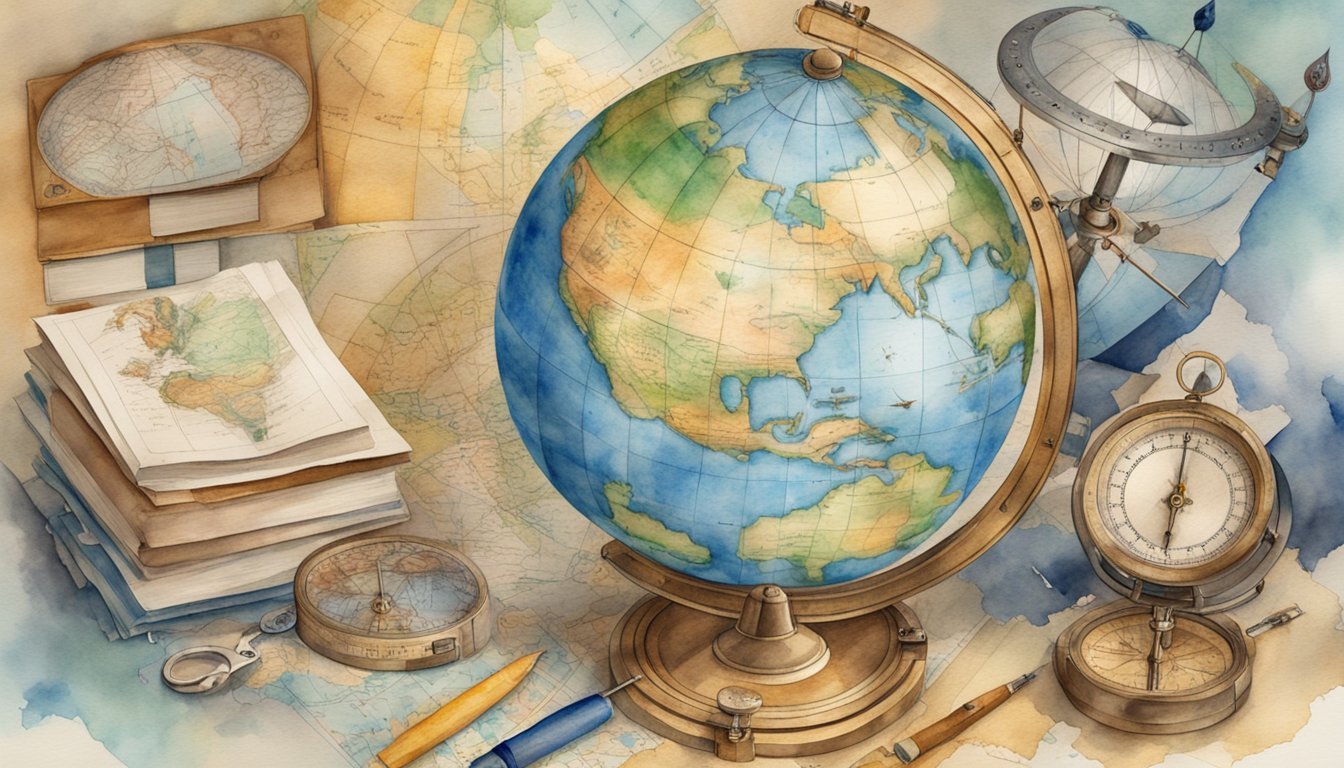Understanding Map Projections
Map projections are essential in transforming the Earth’s spherical surface to a two-dimensional plane such as a world map. This process is crucial for everything from creating accurate navigation charts to educational materials.
From Sphere to Flat Map
When cartographers convert the Earth’s three-dimensional form into a flat map, they must make decisions about how to represent the spherical surface. Since the Earth is not a perfect sphere, but an oblate spheroid, this task can be challenging. The goal is to represent a world that is round, on media that is flat, while maintaining as much accuracy as possible across areas like scale, distance, and landmass shapes.
Common Projection Types
There are numerous types of map projections, each serving specific needs. The Mercator projection, for instance, has long been favored for ocean navigation due to its ability to represent lines of consistent course as straight segments. However, it distorts the size of objects as the latitude increases from the Equator to the poles. Other examples include the Robinson Projection, which seeks to create a more visually pleasing representation of the Earth, balancing distortion of size and shape across all regions.
Distortions in Accuracy
All map projections introduce some kind of distortion because you cannot flatten a sphere without stretching or squishing some part of it. The Mercator projection, while useful for navigation, is known for greatly exaggerating areas at high latitudes. On the other hand, the Robinson Projection tries to balance these distortions, but it cannot eliminate them completely. The scale of a map projection often refers to the degree of distortion, where scale is distorted more significantly at the edges of a rectangular map in comparison to the center near the Equator.
Innovations in World Mapping
The evolution of world mapping seeks to address the inaccuracies inherent in representing a round planet on flat maps. Innovative map designs have emerged, offering a blend of artistic interpretation and scientific precision to better reflect the true proportions of the Earth’s landmasses and oceans.

The AuthaGraph Innovation
Japanese designer Hajime Narukawa’s AuthaGraph world map represents a significant leap forward in accurate world mapping. Utilizing a unique tessellation method, Narukawa divided the globe into 96 equal regions and transferred them onto a tetrahedron, which is then unfolded to become a rectangle. This method maintains area ratios, providing a more precise perspective on the size of continents such as Africa and Antarctica relative to other landmasses. Awarded the 2016 Good Design Grand Award, the AuthaGraph map challenges preconceived norms and has even decorated the walls of classrooms across Japan.
Achieving Greater Accuracy
Efforts to improve map accuracy often focus on better representing the relative sizes and shapes of countries and continents. Renowned cartographers J. Richard Gott, David Goldberg, and Robert Vanderbei developed a double-sided map that minimizes distortion by displaying the Northern and Southern hemispheres separately. This design approach maintains more accurate cardinal directions and distances between points, compared to traditional flat maps projected from the work of Flemish geographer Gerardus Mercator, which notably enlarges areas like Greenland and North America far beyond their true proportions.
Alternative Map Designs
Cartographers and artists continue to create alternative map designs that vary in their approach to portraying the Earth. For example, Buckminster Fuller’s Dymaxion map unfolds the Earth’s surface onto the 20 faces of an icosahedron, promoting minimal distortion of the continents. Another innovative design is the Robinson projection, which aims to create a balanced view by pulling the edges of the map to form a gentle oval, acknowledging the distortions of the Mercator projection yet offering a more familiar sight to viewers. These alternative designs aim to provide an area-equal representation, ensuring that the map’s depiction of the globe is not just a visual aid but a precise tool for education and comprehension.

